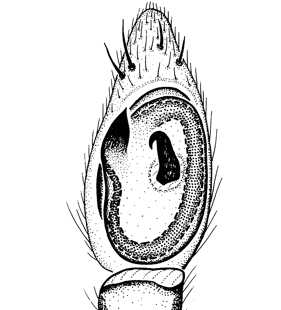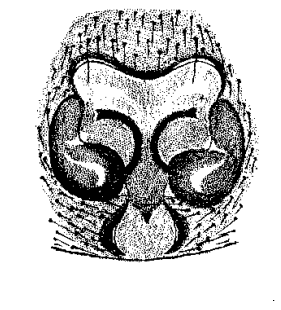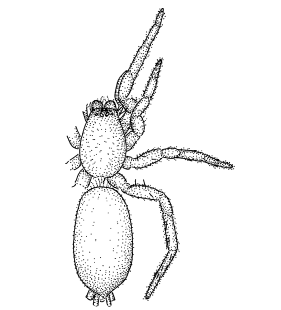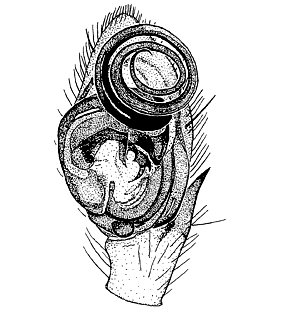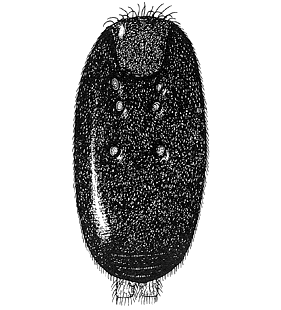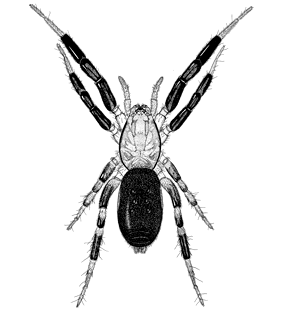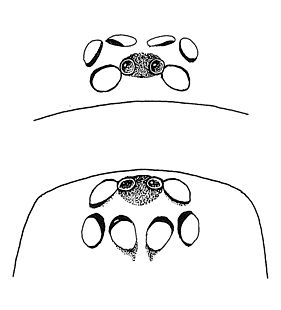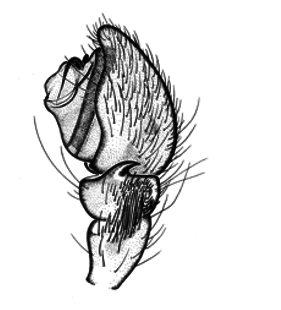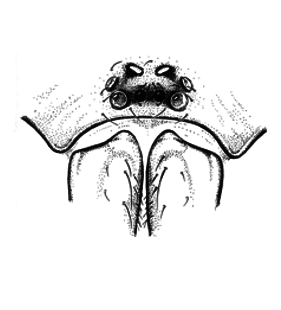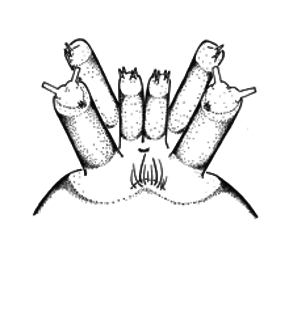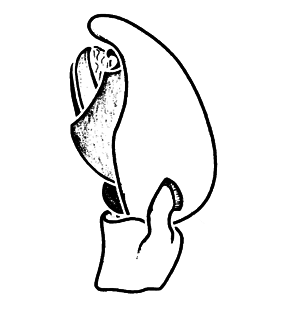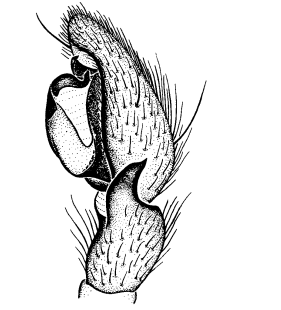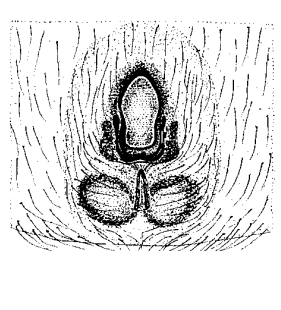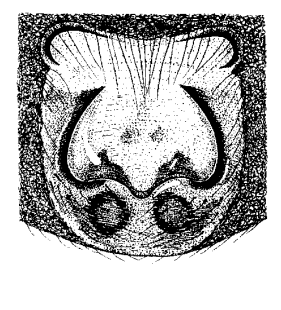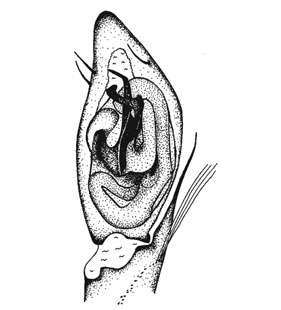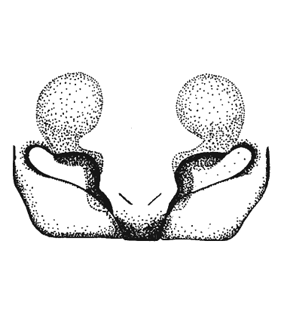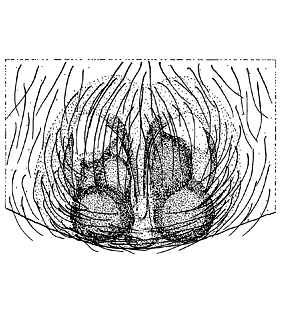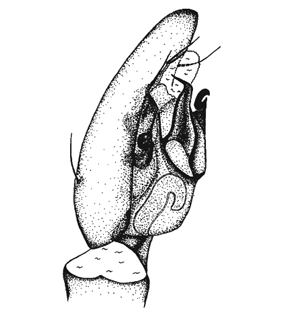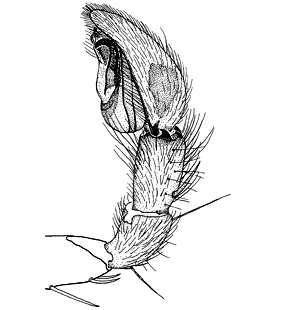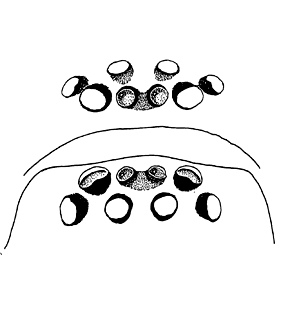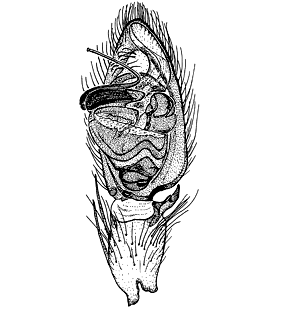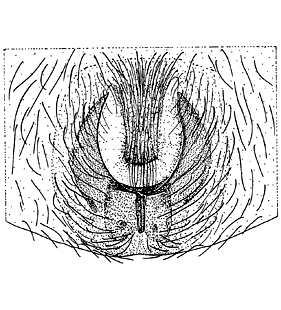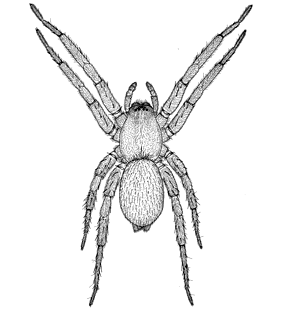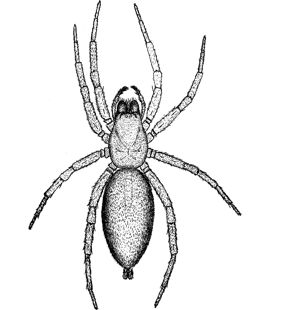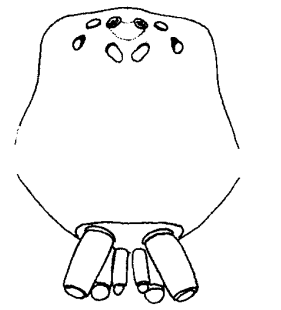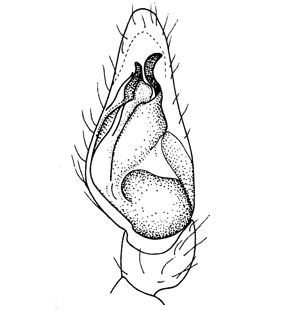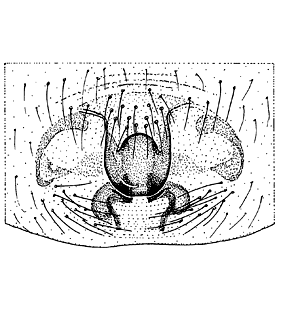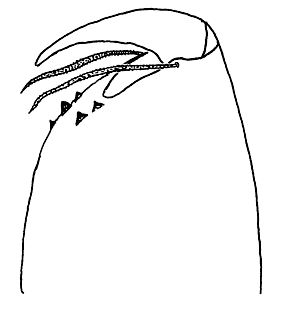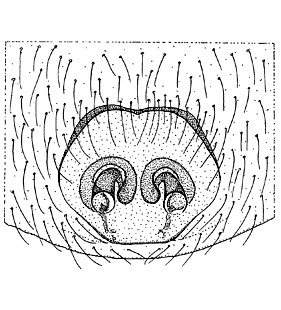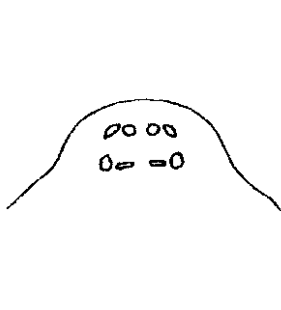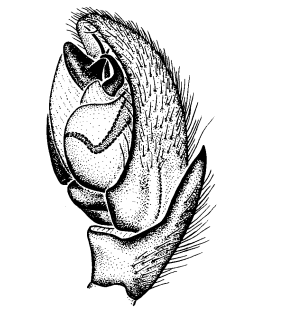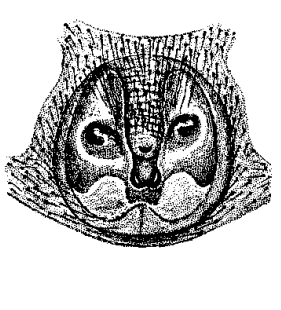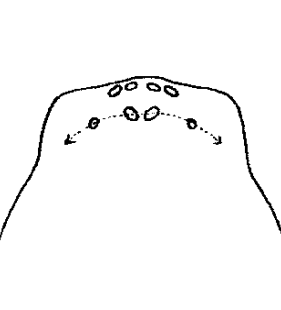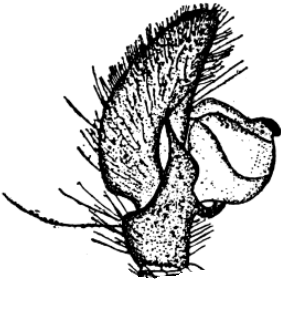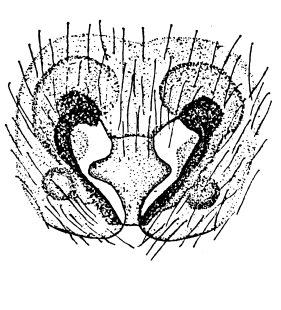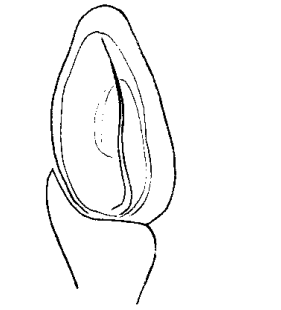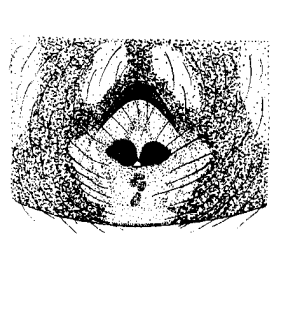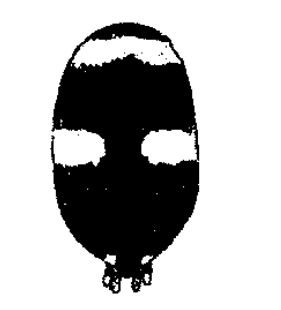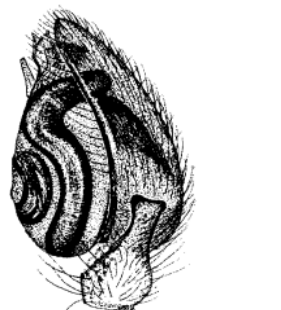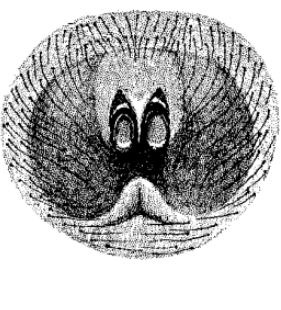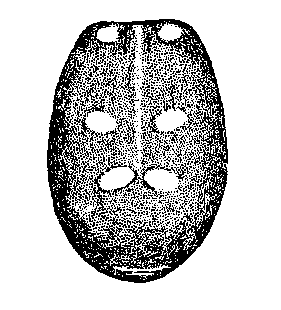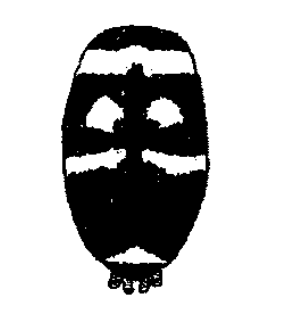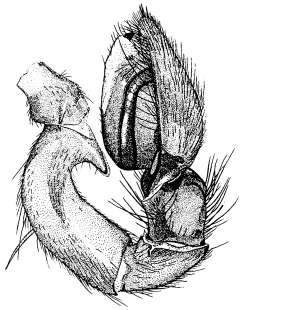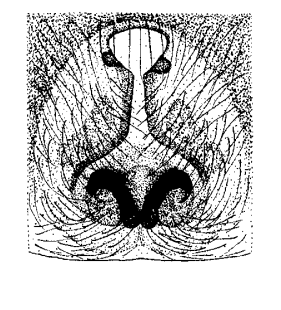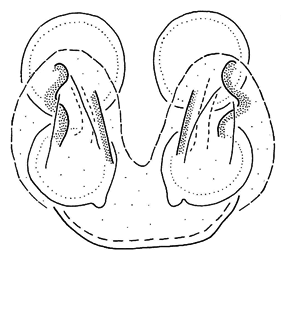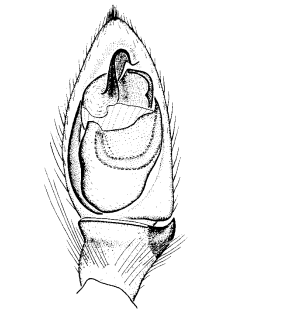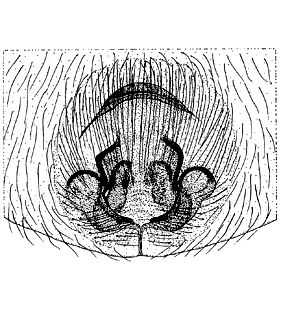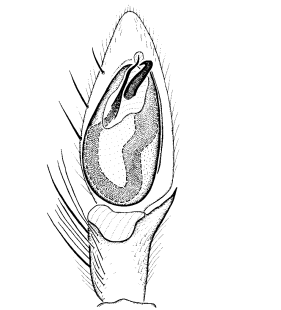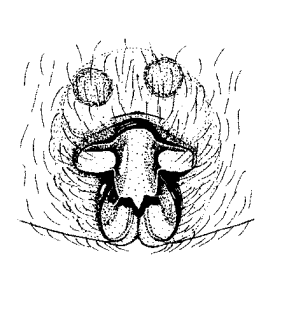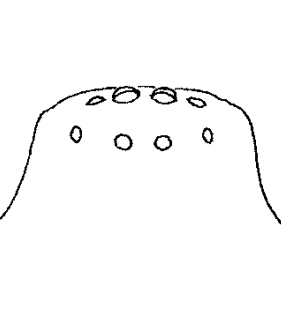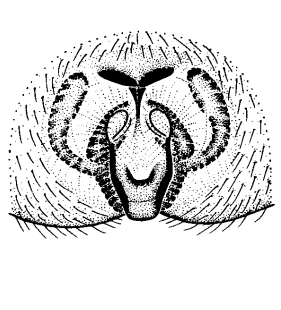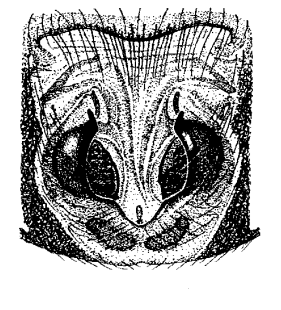Family Gnaphosidae Banks, 1892
Key not complete! Further genera listed at the end of key |
In case you find an error or have a specific suggestion, please follow this link: click
|
||||||||||
| 1 |
Body ant-shaped, the usually slender and dark opisthosoma often bears a saddle-shaped constriction and white spots or transverse white bands, male opisthosomal scutum absent, legs and pedipalps slender, opisthosoma with iridescent / metallic scale-shaped hairs, shining in sunlight, male pedipalp simple |
| |||||||||
| - | Different. Body in some taxa ant-shaped, opisthosoma may be similar but iridescent / metallic scale-shaped hairs absent, male opisthosomal scutum absent or present, legs slender or stout |
||||||||||
| 2 (1) |
Metatarsus III and (often less distinct) IV ventrally-apically with a transverse row of numerous stiff, straight and fairly slender hairs or bristles (“preening comb”) |
||||||||||
| - | Metatarsus III and IV without such a “preening comb” |
||||||||||
| 3 (2) |
Metatarsus III and (often less distinct) IV ventrally-apically with “preening comb”, male opisthosoma usually with dorsal scutum in the basal half |
||||||||||
| - | Metatarsus III and IV also ventrally-distally with “preening comb” or a distinct brush of hairs, embolus long to very long, male opisthosoma with dorsal scutum, vulva ducts long and coiled. |
||||||||||
| 4 (3) |
Almost circular eye position, body length 1.9 mm, dorsoventrally strikingly flat, pale colouration |
| |||||||||
| - | No circular eye position |
| |||||||||
| 5 (3) |
Chelicerae anteriorly with a conspicuous cluster of stiff (partly spine-shaped) bristles |
||||||||||
| - | No cluster of such bristles |
||||||||||
| 6 (5) |
Embolus usually strongly coiled several times (rarely only 1.5 loops) in distal position of the bulbus and in almost a single level, epigyne/vulva as figure, body colouration most often uniformely yellow or light brown, rarely bicoloured |
| |||||||||
| - | Different |
||||||||||
| 7 (6) |
Posterior eye row distinctly procurved, large and almost touching posterior median eyes, embolus stout, epigyne with median plate |
||||||||||
| - | Posterior eye row straight or almost so, posterior median eyes variable (determination of females may be difficult) |
||||||||||
| 8 (7) |
Posterior median eyes large and almost contiguous, male opisthosoma ventrally with numerous spine-shaped bristles, at least in the middle behind the epigastral furrow, male pedipalpal tibia in some species with a brush of hairs, terminal apophysis large and bifid, epigyne in some species with T-shaped median structure |
||||||||||
| - | Posterior median eyes variable, male opisthosoma without such bristles, genital structures different |
||||||||||
| 9 (8) |
Posterior median eyes large, male pedipalpus with a relatively long embolus with clockwise position in the left pedipalpus, large conductor protruding ventrally and widely sticking out in the middle of the embolus, sometimes with retrolateral patellar apophysis, epigyne wider than long |
||||||||||
| - | Posterior median eyes large or small, male pedipalpus different |
||||||||||
| 10 (9) |
Small spiders of 2-3 mm, male pedipalpus at patella and tibia retrolaterally with a field of dense hairs, tibial apophysis short and bent dorsally or with membranous lobe, median apophysis reduced or absent, vulva with a pair of receptacula-shaped “sacs” |
||||||||||
| - | Body size usually larger, male pedipalpus at patella and tibia retrolaterally without a field of dense hairs (dorsal tibial hairs exist in the Zelotes erebeus species group, tibial apophysis may be similar, median apophysis not reduced) |
||||||||||
| 11 (10) |
Body length 2-3 mm, male pedipalpus at patella and tibia retrolaterally with a field of dense hairs, tibial apophysis short and bent dorsally, median apophysis reduced or absent, vulva with a pair of receptacula-shaped “sacs”, body colour yellow-brown to middle brown |
| |||||||||
| - | Body length 3 mm, male pedipalpus at patella and tibia retrolaterally with stiff hairs, tibial apophysis with membranous lobe, median apophysis absent, female unknown, body colour yellowish grey, opisthosoma with light brown scutum |
| |||||||||
| 12 (10) |
Bulbus prolaterally without additional intercalary sclerites, pedipalpal tibia proventrally apically with a distinct bulge stronger developed than in Zelotes, epigyne with a long groove and anteriorly with a single (never paired) helm-shaped pocket, receptacula seminis clearly spaced |
| |||||||||
| - | Bulbus prolaterally with an additional intercalary sclerite and pedipalpal tibia proventrally apically without a distinct bulge, epigyne anteriorly most often with a pair of sclerotized sickle-shaped pockets, in some species with a single helm-shaped pocket |
| |||||||||
| 13 (2) |
Male pedipalpus with a strongly elongated median apophysis, epigyne as in figures |
| |||||||||
| - | Different |
||||||||||
| 14 (13) |
Male pedipalpus with a very long tibial apophysis, epigyne as in figure, prosoma yellow-brown, chelicerae brown, legs and pedipalps yellow |
| |||||||||
| - | Male pedipalpus with a short tibial apophysis, epigyne as in figure, epigyne anteriorly with a helm-shaped structure as in figure |
| |||||||||
| 15 (13) |
Male pedipalpus with conductor in distal position, long and transparent, embolus almost spirally in a distal, oblique and almost vertical position, epigyne without helm-shaped structure |
| |||||||||
| - | Different |
||||||||||
| 16 (15) |
Trochanters (most distinctly III-IV) deeply and not widely notched, male pedipalpus with undivided or (rarely) absent tibial apophysis, bulbal structures rather simple and quite uniformely, epigyne and vulva very uniformely, with a large pit and two pairs of distinct receptacula seminis |
| |||||||||
| - | Trochanters not or only slightly and wider notched, other characters different |
||||||||||
| 17 (16) |
Male pedipalpus with divided tibial apophysis, embolus spirally in a distal and partly almost vertical position, epigyne / vulva longer than wide, very uniformely, with a pair of large pits and strongly coiled ducts |
||||||||||
| - | Different |
||||||||||
| 18 (17) |
Fovea completely absent (a thin black stripe may exist), small and pale spiders of 1.5 – 3 mm with very large anterior or posterior median eyes on a common dark base |
||||||||||
| - | Fovea completely present, eyes variable |
||||||||||
| 19 (18) |
Cheliceral retromargin with two wider and more or less rectangular teeth, male pedipalpus with a long embolus originating basally on the bulbus, epigyne with a large scape |
| |||||||||
| - | Cheliceral retromargin with 2-3 pointed teeth |
||||||||||
| 20 (19) |
Cheliceral retromargin with ?2-3 pointed teeth, embolus short, epigyne anteriorly with large hood |
||||||||||
| - | Cheliceral retromargin with two (rarely 3) pointed teeth, male pedipalpus with a long embolus originating basally on the bulbus and a small tegular outgrowth, epigyne without scape or hood, a large groove may exist |
| |||||||||
| 21 (18) |
Cheliceral retromargin with a large/long rounded lobe and 1-2 small lobes, the small posterior median eye lenses in transverse position and slit-like reduced, gnathocoxae strongly converging, opisthosoma black with light spots or transverse marking, male opisthosoma with scutum, tibia of the male pedipalpus without apophysis, spiders are ant-shaped and feed on ants |
| |||||||||
| - | Different |
||||||||||
| 22 (21) |
Cheliceral retromargin with a wide serrated keel, gnathocoxae strongly converging above the labium, scutum of the male opisthosoma usually absent (some Pterotricha species have a short anterior scutum) |
||||||||||
| - | Cheliceral retromargin different, usually with 0-3 (rarely more) pointed teeth, gnathocoxae not strongly converging, more straight, frequently long, scutum of the male opisthosoma absent or present |
||||||||||
| 23 (22) |
Posterior eye row much wider than the anterior row, with the posterior median eyes much less spaced from each other than the lateral eyes, embolus long, in longitudinal prolateral position, epigyne with a scape, opisthosoma unicoloured |
| |||||||||
| - | Posterior eye row not much wider than the anterior row, and/or posterior lateral eyes closer to the median eyes, embolus different, epigynal scape absent, opisthosomal markings not rare |
||||||||||
| 24 (23) |
Tarsi ventrally with two rows of spine-shaped bristles instead of scopula, patella IV with lateral bristles, extended anterior spinnerets with 6-9 large spigots in a circle but pointed in two groups when retracted, tibia of the male pedipalpus with a ventral rim, outsticking and sclerotized, but no true apophysis in this position, epigyne longer than wide with a large anterior depression or pit which may be divided |
||||||||||
| - | Different |
||||||||||
| 25 (24) |
Patella IV with 0-1 retrolateral bristle |
||||||||||
| - | Patella IV with several retrolateral bristles |
||||||||||
| 26 (25) |
Patella IV with one retrolateral bristle, tibia of the male pedipalpus with a single retrolateral apophysis, ventrally sticking out without sclerotization, cymbium dorsally scopulate in the distal half, epigyne with central depression |
| |||||||||
| - | Patella IV without (rarely a single) retrolateral bristle, tibia of the male pedipalpus with a retrolateral apophysis, in addition with an unsclerotized retroventral apophysis, epigyne with a large groove which may be divided |
| |||||||||
| 27 (22) |
Opisthosoma usually bicoloured dorsally with black and white pattern (hairs may be rubbed off), male opisthosoma with a large dorsal scutum, sclerotized and sickle-shaped median apophysis absent |
||||||||||
| - | Opisthosoma unicoloured, rarely with posterior dark markings, male opisthosoma with or without a dorsal scutum, sclerotized median apophysis frequently present |
||||||||||
| 28 (27) |
Fovea quite indistinct, cheliceral retromargin with two small teeth, pedipalpal femur ventrally bulging, bulbus simple and slender |
| |||||||||
| - | Fovea distinct, cheliceral retromargin with 0-1 tooth |
||||||||||
| 29 (28) |
Posterior median eyes large and spaced usually by less than their diameter, cheliceral retromargin with small lobe, male pedipalpus with a widened tibial apophysis, epigyne / vulva with large and kidney-shaped receptacula, spiders show an ant-like locomotion |
| |||||||||
| - | Posterior median eyes smaller and spaced usually by more than their diameter, cheliceral retromargin smooth or with one tooth, genital structures different or similar |
||||||||||
| 30 (29) |
Cheliceral retromargin smooth |
| |||||||||
| - | Cheliceral retromargin with a single tiny tooth |
||||||||||
| 31 (30) |
Opisthosoma dorsally dark with light spots, male pedipalpal femur with a ventral-basal outgrowth, epigyne as in figure with two pairs of receptacula seminis |
| |||||||||
| - | Opisthosoma and prosoma dorsally with distinct longitudinal light and dark bands, male pedipalpal femoral outgrowth absent, vulva with a single pair of receptacula seminis |
| |||||||||
| 32 (27) |
Tibia IV with or without dorsal bristles, male opisthosoma with scutum as in figure (females may be difficult to identify, therefore all alternatives should be considered) |
||||||||||
| - | Tibia IV without dorsal bristles, male opisthosomal scutum absent |
||||||||||
| 33 (32) |
Tibia IV with 2 dorsal bristles, cheliceral retromargin with two teeth, posterior eye row approximately straight, male pedipalpus with a short and divided tibial apophysis, epigyne with a long scape |
| |||||||||
| - | Tibia IV with 0-1 dorsal bristles, cheliceral retromargin frequently with a single tooth, male pedipalpal tibial apophysis undivided, epigyne without scape |
||||||||||
| 34 (33) |
Retrolateral bristle at patella IV absent, posterior eye row straight or slightly procurved, eyes usually fairly large, cheliceral retromargin usually toothless (rarely with a single denticle) Macarophaeus (no European species) |
||||||||||
| - | Retrolateral bristle at patella IV present, median apophysis present, cheliceral retromargin with denticles |
||||||||||
| 35 (34) |
Posterior eye row strongly procurved with large eyes |
| |||||||||
| - | Posterior eye row slightly procurved with fairly small eyes, widely spaced |
||||||||||
| 36 (32) |
Tibia I-II usually with two pairs of ventral bristles, labium as long as wide, male pedipalpus with a pointed tibial apophysis, epigyne anteriorly with a helm-shaped structure |
| |||||||||
| - | Tibia I-II ventrally without bristles, labium longer than wide, male pedipalpus with a tibial apophysis usually widened distally and /or bearing a keel, epigyne anteriorly usually with several folds right across or (rarely) with a single sclerotized rim |
| |||||||||
| - |
Pseudodrassus is not included into this key. Murphy (2007) writes about the only record for Europe (Pseudodrassus ricasolii): “Described from a juvenile by Caporiacco (1935). Description in the literature of congeners are inconsistent.” Thus, this species may be difficult to trace to its identity. This is also the reason why this genus cannot be included into the family key. |
Further genera
- 1. Algarvezelotes
- 2. Chatzakia
- 3. Civizelotes
- 4. Coreodrassus
- 5. Heser
- 6. Lasophorus
- 7. Macarophaeus
- 8. Marinarozelotes
- 9. Marjanus
- 10. Megamyrmaekion
- 11. Minosiella
- 12. Odontodrassus
- 13. Pterotrichina
- 14. Sernokorba
- 15. Shaitan
- 16. Trichothyse
- 17. Zimiromus
